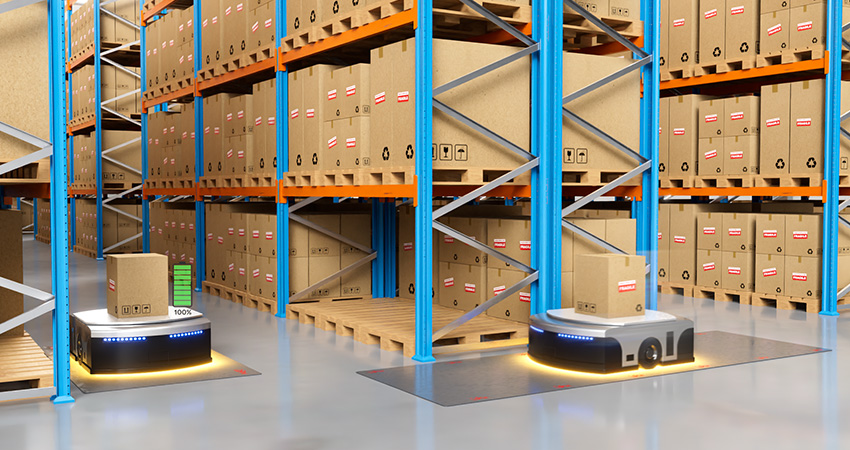CaPow hopes to provide continuous power for warehouse robots of all stripes (company illustration)
CaPow, an Israeli company that has developed a continuous power supply for warehouse robots to eliminate downtime from recharging, has struck a U.S. partnership deal to expand here, selling into robot manufacturers, 3PLs and companies with their own fulfillment and distribution networks.
The company has struck a reseller agreement with JLC Robotics, an Erlanger, KY-based seller of autonomous guided vehicles (AGVs) which use fixed navigation systems such as wires or magnetic tape to transport goods within a facility.
CaPow’s Genesis solution employs floor charging pads with copper foil transmitters that the robots roll over, sending them power by means of their mounted antennas. It can integrate with ResinDek flooring from Cornerstone, used at many facilities worldwide with robotic operations.
Genesis can be used to either completely replace or augment lithium ion batteries on AGVs, more advanced autonomous mobile robots (AMRs), which operate without fixed navigation systems via cameras and LIDOR sensors, and other robotic systems.
Mor Peretz, CEO and co-founder of CaPow, said the company is engaged in several proof-of-concept projects with U.S. companies in manufacturing, automotive, retail and grocery. He said he developed the model with Ph. D. students at Ben Gurion University, where he taught electronics.
“I spent most of my career in industry, primarily in the San Francisco Bay area, designing circuits for energy management, data centers, lighting fixtures and mobile chargers,” Peretz said. “One my earlier passions involved wireless energy. I was always fascinated by Nikola Tesla’s inventions, and it was one of his unfulfilled inventions.”
While there were a number of applications for CaPow’s perpetual energy technology, including drones and mobile devices, Peretz said he saw warehouse robots as the strongest use case to prove it out.
“I was at an automotive plant with a great number of robots,” he said. “When they were in operation it was a mesmerizing dance, moving in perfect harmony, but I saw a significant portion not doing anything. I immediately asked, why aren’t these robots part of the operation? I was told they were being charged.”
Peretz said he saw the “energy problem” with robotics and automation as “the root cause or bottleneck that prevents a further scaling of autonomous operations in warehouses and manufacturing facilities.”
Jamie Callihan, President of JLC Robotics, said he’s been in manufacturing for 30 years, the past 15 using automated systems. Last year, he imported AGVs from Japan, and realized many of his customers had challenges around making the most efficient use of the technology.
“Noam approached us last year, telling us about powering perpetual motion, not stopping to charge units,” Callihan said. “We have a large network of partners across North America who sell into their own territories, and they’re all dealing with the operational limitations of charging AGVs. It’s a great partnership.”
Often, he said, robot manufacturers recommend purchasing 30% more units than a facility’s operations call for to counter the issue of downtime while charging. “It can be another $1 million or more invested,” he said. “For a smaller company, that’s just not in budget.”
Peretz said many of the companies he’s engaged with in the U.S. have purchased their warehouse robots, vs. employing the popular as-a-service rental model. “Plenty of them have their own existing deployments, and they’re not even waiting for a reply from the (robot) manufacturer to integrate with our system,” he said.

